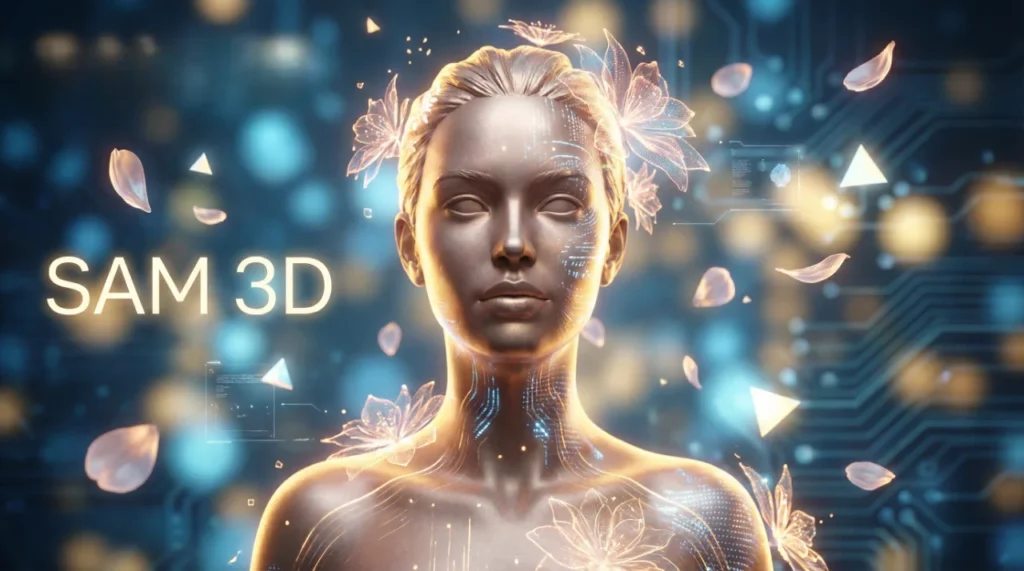Meta on Tuesday unveiled SAM 3D, a new AI system that can generate full 3D objects from a single 2D image — a leap that pushes Meta deeper into computer vision, AR, and open-source AI ecosystems.
The release arrives alongside SAM 3, the next generation of its “Segment Anything” model capable of text-prompt object recognition across images and video. Both models are available to researchers and developers starting today.
Meta Brings 3D Reconstruction to the Mainstream
Meta says SAM 3D can take a single photo of an object — or even the human body — and produce a textured 3D mesh suitable for AR previews, product visualization, and creative design tools. Until now, accurate 3D reconstruction typically required multi-camera rigs, depth sensors, or specialized datasets.
The system launches with two variants:
• SAM 3D Objects, designed for everyday items such as furniture, toys, home goods, or tools.
• SAM 3D Body, focused on human shape and pose reconstruction for applications in fitness, apparel and avatar creation.
Meta has also released model weights, inference code, and new evaluation datasets, positioning SAM 3D as an open platform similar to its Llama strategy in language models.
A Strategic Push Into AR and Computer Vision
While Meta framed the launch as a research milestone, the company is already deploying SAM 3D internally. According to Meta, the technology now powers the “View in Room” experience on Facebook Marketplace, where users can preview furniture in their space using only a standard phone camera.
The move underscores Meta’s long-term bet on AR commerce and mixed-reality platforms. A system that can produce usable 3D assets from everyday photos lowers one of the biggest barriers preventing retailers and creators from adopting immersive shopping formats.
SAM 3, the companion model, extends Meta’s segmentation tools by supporting natural language instructions. Users can type phrases like “the blue cup but not the hand holding it,” and the model isolates the correct object across multiple frames — a capability aimed at video editing, visual effects, and robotics perception.
Industry Reactions and Early Implications
Researchers and developers online described SAM 3D as “impressively practical,” noting that early demonstrations show strong results even from low-quality images. The model still struggles with fine details and highly reflective surfaces, but experts say the performance is “well beyond typical single-view methods.”
For creators, the biggest impact may be speed. Generating 3D assets usually takes hours of manual modeling. SAM 3D promises near-instant meshes, enabling faster prototyping in animation, gaming and AR apps.
In robotics, single-image 3D understanding could improve object grasping, navigation and scene reasoning — areas where precise volumetric data is crucial.
What Comes Next
Meta says developers can experiment with the models through its new Segment Anything Playground, a browser-based environment for testing segmentation, tracking and 3D reconstruction. Wider integration into Meta’s product stack — including advertising and creator tools — is expected to follow.
The release also raises questions around privacy and consent. A system capable of reconstructing a person’s 3D body from one photo could accelerate concerns around misuse, deepfakes and unauthorized digital replicas. Meta says the models were trained with specific safeguards, but external audits are still pending.
Despite those concerns, SAM 3D marks one of the most significant computer-vision releases of the year. If widely adopted, it could move 3D creation closer to the accessibility of image generation — and reshape how digital content is produced across industries.
